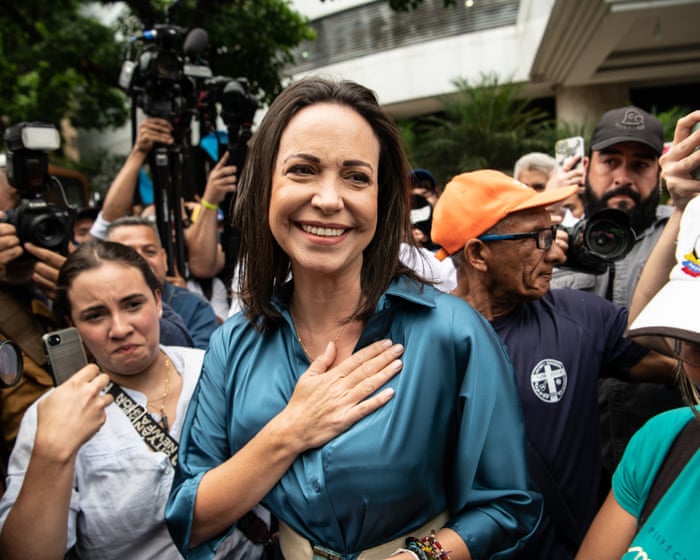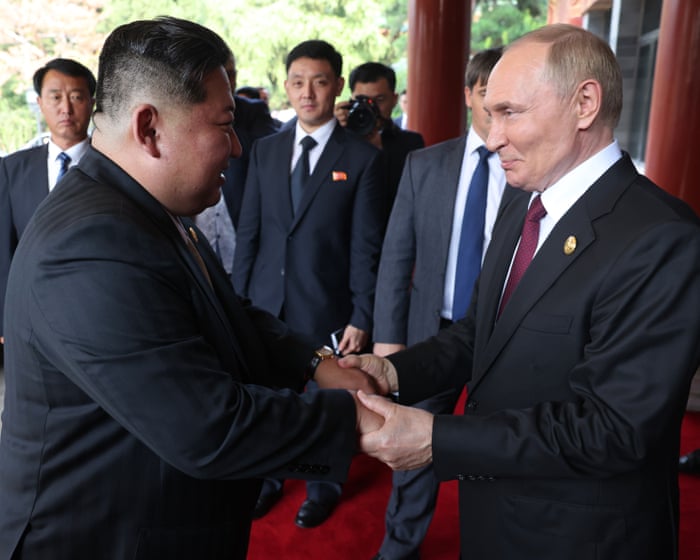George Mitchell, the key American negotiator behind the Northern Ireland peace accord, once said diplomacy is 700 days of failure and one day of success. In Gaza, the tragedy is that there have been 730 days of failure and not a single day of success. The devastation, the staggering loss of life, and the conflict’s spread to other nations stand as a shameful testament to failed diplomacy and the erosion of international law. This may well be diplomacy’s darkest hour since 1939.
Some argue that failure is unavoidable, given how deeply rooted and resistant to compromise the conflict has become—suggesting it can only be resolved by force, through the suppression or elimination of one side.
Yet, despite the deep-seated animosity, a consensus is growing in the West that this crisis has been grossly mishandled. European leaders initially handed responsibility to a U.S. Democratic administration that idealized modern Israel, misjudged how its government would respond to the horrors of October 7th, and underestimated how that would divide Western opinion.
Admissions of fault and self-justification are now flowing from Joe Biden’s former team. In her book about her unsuccessful presidential campaign, Kamala Harris recalls, “I urged Joe, when he spoke publicly on this issue, to show the same empathy for the suffering of innocent Gazan civilians as he did for Ukrainians. But he couldn’t do it: while he could passionately declare ‘I am a Zionist,’ his remarks about innocent Palestinians felt insufficient and forced.”
She adds that Benjamin Netanyahu never reciprocated the loyalty Biden showed him, preferring Donald Trump as his counterpart.
At best, the Democrats misjudged the power dynamics. “We did not act like a superpower,” said Andrew Miller, a former deputy assistant secretary of state for Israeli-Palestinian affairs. “Instead of starting from the belief that we could solve these problems, we convinced ourselves there was little we could do to influence our regional ally, Israel.”
Trump did not share that sense of limitation. He used unpredictability as his main diplomatic tool, but like Biden, his special envoy Steve Witkoff became stuck trying to broker a deal that would free all hostages without Israel resuming hostilities, as it did in March.
As various versions of Witkoff’s proposals emerged, France and Saudi Arabia took independent action, using a UN conference on a two-state solution to steer diplomacy in a new direction. This broke the U.S. monopoly on peace efforts and finally brought the long-neglected issue of Palestinian self-rule to the forefront.
The ‘Day-After’ Plan
Before the conference—originally scheduled for June but delayed by a month due to Israel’s attack on Iran—Emmanuel Macron secured a letter from Palestinian Authority President Mahmoud Abbas endorsing a post-ceasefire plan. Under this plan, Hamas would be disarmed and barred from office, and a transitional body of experts would govern Palestine “under the umbrella” of a reformed Palestinian Authority. This time, the often-vague notion of PA reform was given concrete steps, including Abbas’s commitment to long-overdue elections and internal changes, with an international force to be deployed.
Several “day-after” plans for Gaza had been circulating since 2024—one by American and Israeli experts published by the Wilson Center, another by the Rand Corporation, a set of principles from the United Arab Emirates, and a proposal from Egypt. The Saudi-French plan incorporated many of these ideas into what became the New York declaration, which was passed by the UN conference in July and later endorsed by the UN General Assembly.In September, the General Assembly saw Israel and the United States vote against a resolution. A European diplomat noted, “We persuaded the Americans to tie ceasefire commitments to a post-conflict plan and to recognize that focusing solely on a ceasefire wouldn’t be effective.”
Regarding the U.S.’s heavy reliance on Israeli military strength, the diplomat added, “We also convinced them they couldn’t keep gambling and expecting a perfect outcome.”
A key moment was a late August meeting at the White House, where Jared Kushner, Tony Blair, and Steve Witkoff convinced President Trump that forcibly expelling Palestinians from Gaza was neither necessary nor wise. An attendee shared, “Trump was aware of Netanyahu’s unreliability and had invested in Middle Eastern relationships. He agreed that countries like Jordan and Egypt would not accept an influx of Palestinian refugees, so he removed mass displacement from consideration.”
Another outcome was the alignment of U.S. and French strategies. French Foreign Minister Jean-Noël Barrot explained at Harvard that Trump had sent advisors to gather ideas from Arab nations, France, and the UK for a post-conflict plan. The goal of the conference and UN vote was to clear the way for a two-state solution, with Arab states condemning the October 7 attacks and agreeing to exclude Hamas from Gaza’s future.
Barrot emphasized that the vote marked the first international condemnation of Hamas, labeling it a terrorist organization and calling for its disarmament and exclusion from governance. He also highlighted that Arab governments had publicly committed to normalizing relations with Israel and forming a regional framework similar to ASEAN or OSCE, statements they had never made before.
Contrary to appearances, the lead-up to the General Assembly involved Arab states engaging with Israel, while Hamas, which opposes a two-state solution, was marginalized and has accepted its loss of political influence.
However, Israel found the New York declaration unacceptable due to its support for a Palestinian state and a reformed Palestinian Authority. When Trump presented his alternative plan to Arab and Muslim states during the assembly, the declaration served as the standard against which it was measured.The Trump plan, largely crafted by Blair and Kushner, was intentionally vague, lacked specifics, and omitted a timeline. Arab states had reservations, but supporters like Blair contended that a more detailed plan would lose broad backing and momentum. Western diplomats were pleased that the plan wasn’t immediately leaked, interpreting this as a sign that Arab nations believed they could engage with it.
While Arab delegations departed New York, Netanyahu remained, holding extensive weekend meetings with Witkoff. After Israel’s strike on Hamas negotiators in Qatar on September 9—seen as a personal betrayal of Witkoff and Qatar—Netanyahu was unwelcome at the White House. Yet, he managed to secure additional concessions.
The amnesty for Hamas members was limited to those who surrendered their weapons in the presence of international observers and pledged to peaceful coexistence. More specifics were included about dismantling Hamas infrastructure. Furthermore, the withdrawal of Israeli Defense Forces was left unclear, with the IDF only required to pull back to a security buffer zone covering over 17% of Gaza until the area was deemed secure from any renewed terrorist threats.
In a video message following the plan’s release, Netanyahu reassured his domestic supporters that Israel’s core demands were met: Gaza would remain separate from the West Bank, the Palestinian Authority would not return to Gaza, there would be no move toward a two-state solution, and Israeli security forces would not withdraw from most of the Gaza Strip.
By catering to the hardliners in his coalition, Netanyahu was also attempting to push Hamas into rejecting the plan, allowing him to continue the military advance into Gaza City.
Hamas’s Response
Although the plan did not specify when the technocratic board would transfer power to an elected Palestinian government, Qatar, Turkey, and Egypt encouraged Hamas to accept many of the ambiguous points, which could be resolved later, in order to end the war.
Diplomats noted that this message resonated more with the younger Hamas fighters inside Gaza, who were deeply aware of the sacrifices made, than with the political leadership in Doha. With wording suggested by Qatar, Hamas’s reply was essentially a conditional “yes” open to interpretation. To Netanyahu’s dismay, Trump interpreted it as an unequivocal acceptance. Crucially, Hamas was willing to give up its main bargaining chip: the remaining hostages.
According to Tahani Mustafa of the European Council on Foreign Relations, Palestinian politics has become more pragmatic since the October 7 attack. Palestinians are now seeking leaders who can make life tolerable, protect their land, and improve living conditions, with many resigned to their circumstances.
Against this backdrop, the technocratic body, chaired by Trump but likely led by Blair with input from Palestinian diaspora figures, could gain legitimacy through its effectiveness.
Blair will operate in a volatile environment with elections approaching in both Israel and Palestine. One of the body’s initial challenges will be to establish ties with Palestinian political factions. While Blair has strong connections with Middle Eastern elites, he lacks grassroots support and may rely on countries like Egypt to mediate with the public.China is leading talks on Palestinian unity, but the aging and authoritarian president of the Palestinian Authority has tried to undermine them. If elections go ahead as planned, they could bring change. In the last attempt at elections in the West Bank in 2021, there was clear democratic interest, with 36 independent lists forming outside the established factions. A key concern is what might happen if the election results are not to the liking of Blair’s technocratic board.
As the war in Gaza drags on, causing ever more destruction, Israel’s reputation has suffered severely. In the Arab world, Israel is now viewed as a bigger security threat than Iran. Across the Global South, it is compared to apartheid-era South Africa, while in Europe, protests and accusations of genocide persist. Increasing majorities of American Jews and Democrats also disapprove of Israel’s actions.
Robert Malley, a U.S. negotiator during the Oslo Accords, recently co-authored a book arguing that rational diplomatic solutions to the conflict are impossible. He noted that external peacemakers have been too focused on getting the two sides to agree on the concept of a Palestinian state—mere words on paper—without addressing the deeper nature of the conflict. He described it as a “historical clash of narratives.”
From the Israeli perspective, they were victorious in 1948 and 1967. Palestinians, on the other hand, believe they suffered a historic injustice in 1948, when 700,000 were expelled and lost their land.
Malley added that for Americans to come in and suggest papering over these differences—ignoring the right of return and both sides’ historic grievances—and then wrapping it up as peace was never going to be acceptable to the parties involved.
Frequently Asked Questions
Of course Here is a list of FAQs about diplomatic failures in the context of the IsraelGaza conflict designed to be clear and accessible
BeginnerLevel Questions
1 What does mishandling the conflict actually mean
It means that diplomatic efforts by world leaders and organizations have failed to stop the violence protect civilians or create a path toward a lasting peace Instead actions or inactions often make the situation worse
2 Why is it so hard for other countries to just step in and stop the fighting
The conflict is deeply complex with both sides having strong historical religious and security claims Major world powers often have conflicting alliances and interests making a unified international response nearly impossible
3 What is a humanitarian ceasefire and why is it so difficult to achieve
A humanitarian ceasefire is a temporary pause in fighting specifically to allow aid like food water and medicine to reach civilians Its difficult because each side fears the other will use the pause to gain a military advantage
4 How does mishandled diplomacy affect regular people
It leads to more deaths widespread destruction a deepening humanitarian crisis and fuels hatred and radicalization on both sides making future peace even harder
5 What is the role of the United Nations in this
The UN tries to negotiate ceasefires deliver aid and pass resolutions However its efforts are often hampered because powerful member states can veto actions they disagree with
Advanced Practical Questions
6 Whats the difference between a unilateral action and a negotiated one in this context
Unilateral One side acts alone without agreement from the other This often escalates tensions
Negotiated Both sides agree to terms through intermediaries This is harder to achieve but is the essence of successful diplomacy
7 Can you give an example of a diplomatic misstep in this conflict
A common misstep is when foreign leaders or organizations issue onesided statements that only condemn one party while ignoring the actions or grievances of the other This is seen as taking sides destroys trust and makes them ineffective as neutral mediators




